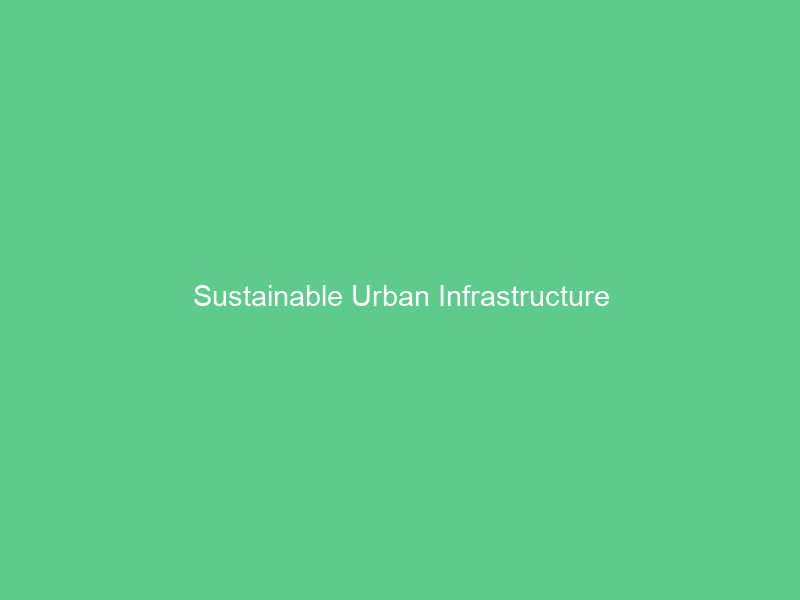Sustainable urban infrastructure involves designing, building, and operating facilities which provide economic, environmental (including climate resilience), and social benefits throughout its entire life cycle. Civil engineering services play an integral part in creating this type of infrastructure.
Urban green infrastructure can help mitigate air temperatures by creating green space in public parks, gardens, rooftops and single elements like verdant walls or Singapore’s Supertree Grove.
Transportation
Transportation infrastructure such as roads, railways and airports have an enormous environmental footprint. Through incorporating sustainability practices like cutting energy consumption and adopting renewable sources such as solar or wind power into these facilities’ designs can improve environmental performance of cities thereby decreasing waste production and carbon dioxide emissions.
Sustainable transport systems can also serve as a bridge between urban communities, encouraging social exchange and cultural interaction. Furthermore, efficient transportation systems require less land, allowing green corridors to be constructed around them.
Civil engineering firms need to collaborate closely with architects, ecologists, planners and other stakeholders in order to foster cross-disciplinary collaboration. This may include educational initiatives educating people on various components of sustainability – renewable energy through to green infrastructure and smart city building – as well as training programs that cultivate expertise among professionals allowing them to develop sustainable infrastructure that benefits urban communities.
Water
Water supply is at the core of sustainable urban infrastructure. Urban sustainability initiatives such as rain gardens and bioswales can capture and absorb stormwater runoff, relieving pressure on traditional drainage systems while simultaneously improving its quality thanks to tree roots and soil filtering out pollutants from it.
Green infrastructure (GI) not only offers environmental advantages but can be both more affordable and resilient than its grey infrastructure counterpart. According to one recent study, nature-based infrastructure (NBI) may generate up to 30 times more value per dollar invested for its development and operation.
Cities across the world are taking steps towards sustainability by reducing their carbon footprint, using public transportation more frequently, encouraging walking and cycling, creating green spaces, parks and greenways and developing comprehensive plans to achieve sustainability in all aspects of life by 2040 – such as New York with city bikes for residents, free parking space access and greenspaces for recreation.
Energy
Civil engineering services can assist urban developers in reaching this goal through designing systems to minimize waste and promote recycling. Furthermore, effective transportation is key to cutting emissions and energy consumption; Copenhagen in Germany has implemented bike superhighways used by nearly half its population to access public transportation – while also taking part in green initiatives like electric vehicle charging stations.
San Francisco requires that all garages and parking lots install electric vehicle charging stations to encourage residents to use electric vehicles. Such systems offer numerous co-benefits that reduce pollution levels while improving wellbeing, providing renewable energy sources to power grids across cities, and improving resilience through carbon neutrality initiatives and resilience strengthening plans. Implementation can be difficult due to high upfront costs of these technologies that necessitate innovative financing schemes – however.
Green Buildings
Sustainable building encompasses many strategies and technologies. These range from energy efficiency, toxic waste reduction, maintenance optimization, interior environmental quality improvement, materials efficiency design efficiency and water efficiency to name just some.
Sustainable construction takes a comprehensive approach that encompasses its siting, design, build, operation and demolition (read Life Cycle Assessment for more). For instance, buildings designed with flexible and adaptive features throughout their lifespan can easily transform from offices into apartments or shopping centers without much disruption to either structure or environment.
Green buildings can also be constructed in areas already serviced by existing infrastructure, which reduces the need for additional roads, water lines and utilities. Construction materials that have a lower impact on the environment such as reclaimed lumber, recycled glass or steel materials or green products made through less toxic processes should also be prioritized when choosing to construct green buildings.

